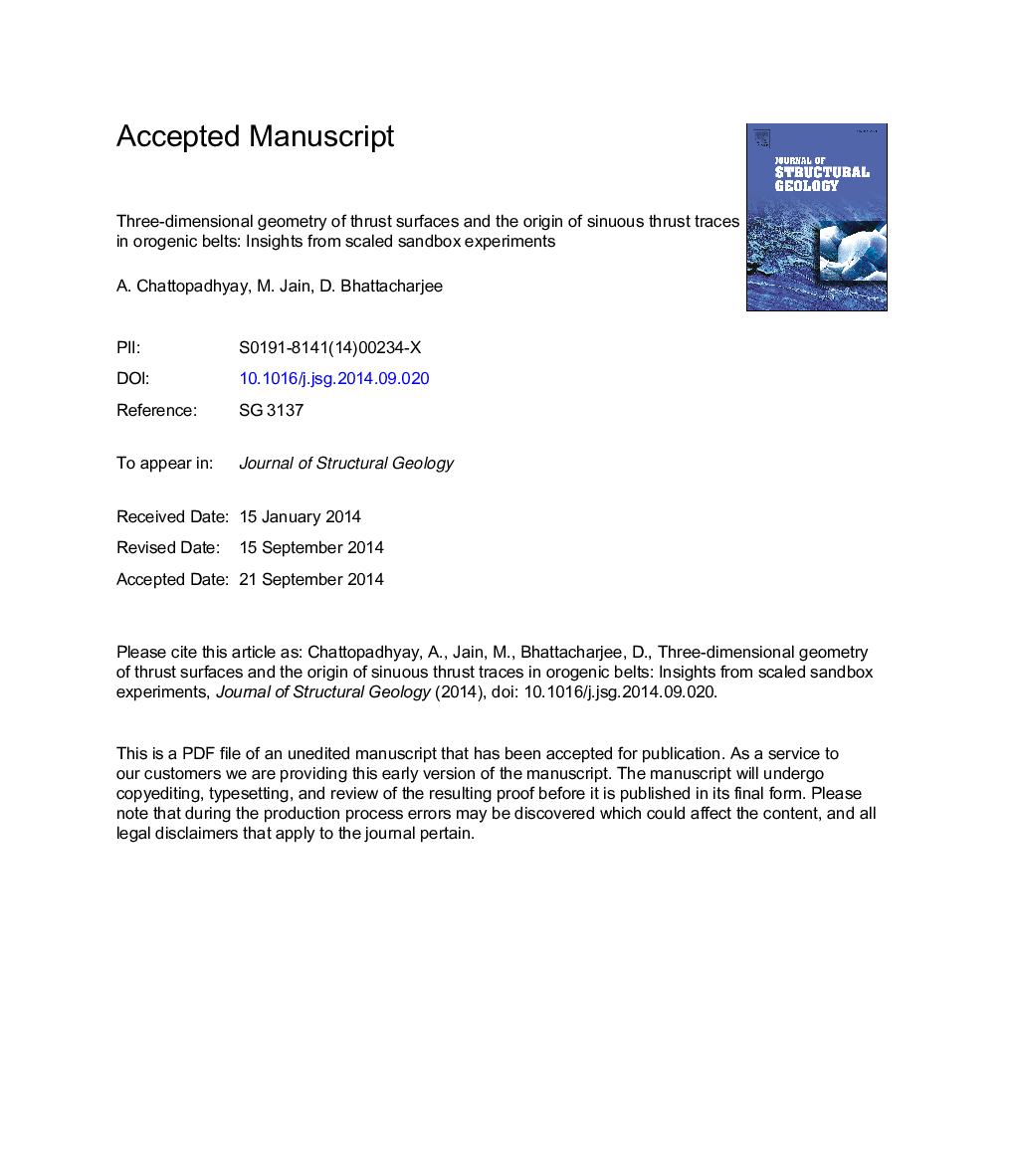| Article ID | Journal | Published Year | Pages | File Type |
|---|---|---|---|---|
| 6444839 | Journal of Structural Geology | 2014 | 52 Pages |
Abstract
Sinuous traces of emerging thrust tips, comprising multiple salients and recesses, are commonly observed in orogenic belts (e.g. Lesser Himalayas of India, Nepal and Bhutan) and in accretionary prisms (e.g. Nankai Trough off the coast of Japan). Lateral (along the strike of the deformation zone) variation in the depths of foreland basins (i.e. variable sediment thickness) or in the strength of the basal detachment, or presence of a curved indenter has been traditionally cited to explain the formation of salients in fold-and-thrust belts, although they are not applicable in all cases. In the present work, we have carried out four series of scaled analog model experiments using dry quartz sand, changing the dip of the basal decollément (β = 0° or 5°) and the basal friction (μb = 0.5 or 0.3) to investigate the 3D shape of thrust surfaces under varying overall boundary conditions, but without any lateral variation of these parameters, within the models. The experimental results show that under all boundary conditions, thrust surfaces are curved both in their dip and strike directions (i.e. spoon-shaped in 3D). Multiple concave-upward and convex-upward segments constitute a thrust surface, which produces a sinuous trace when the tip line intersects the Earth's surface. It is also shown that thrust surface curvatures occur at different scales, and the overall thrust surface roughness (corrugations) has a self-affine fractal geometry.
Keywords
Related Topics
Physical Sciences and Engineering
Earth and Planetary Sciences
Geology
Authors
A. Chattopadhyay, M. Jain, D. Bhattacharjee,
